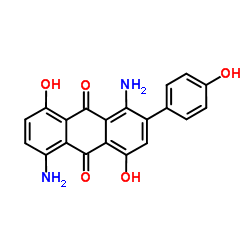disperse blue 35

disperse blue 35 structure
|
Common Name | disperse blue 35 | ||
|---|---|---|---|---|
| CAS Number | 12222-75-2 | Molecular Weight | 362.336 | |
| Density | 1.6±0.1 g/cm3 | Boiling Point | 758.9±60.0 °C at 760 mmHg | |
| Molecular Formula | C20H14N2O5 | Melting Point | N/A | |
| MSDS | Chinese USA | Flash Point | 412.8±32.9 °C | |
| Symbol |

GHS07 |
Signal Word | Warning | |
|
Assessment of the sensitizing potential of textile disperse dyes and some of their metabolites by the loose-fit coculture-based sensitization assay (LCSA).
Arch. Toxicol. 86(5) , 733-40, (2012) Certain textile disperse dyes are known to cause allergic reactions of the human skin. Here, we examined 8 disperse dyes and 7 products of azo-cleavage of these dyes in an in vitro assay. We used the loose-fit coculture-based sensitization assay (LCSA) of pri... |
|
|
Textile dye dermatitis.
J. Am. Acad. Dermatol. 32 , 631, (1995) The literature concerning textile dye dermatitis published during the last decade was reviewed. Sixty-one cases of dye-allergic contact dermatitis in which the presentation or course of the dermatitis was unusual or the dye allergen was one not previously rep... |
|
|
Textile dye dermatitis. A review.
J. Am. Acad. Dermatol. 12 , 1079, (1985) The occurrence of dermatologic problems caused by consumer exposure to dyes on clothing is reviewed. Thirty-one dyes, mainly disperse with anthraquinone or azo structures, have caused allergic contact dermatitis. Phototoxic dye dermatitis is rare. |
|
|
Chemical investigations of disperse dyes in patch test preparations.
Contact Dermatitis 58(4) , 199-209, (2008) Contact allergy to textile dyes is not uncommon. The allergy is detected by patch testing patients with commercial patch test preparations.To investigate 8 disperse dyes (DDs) used for patch testing in the departments in Malmö and in Leuven and to compare the... |
|
|
Spectroscopic studies of cutaneous photosensitizing agents--XVI. Disperse blue 35.
Photochem. Photobiol. 54(1) , 37-42, (1991) The photochemistry (Type I and II) of the phototoxic textile dye Disperse Blue (DB-35) and its purified components has been studied using electron spin resonance in conjunction with spin trapping technique and the direct detection of singlet oxygen (1O2) lumi... |